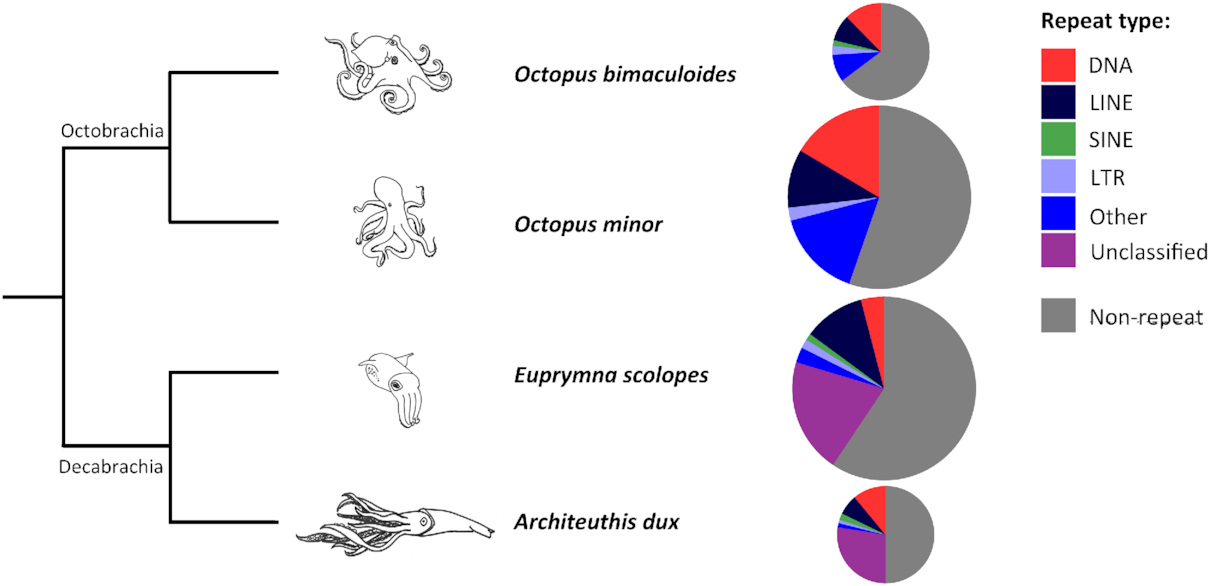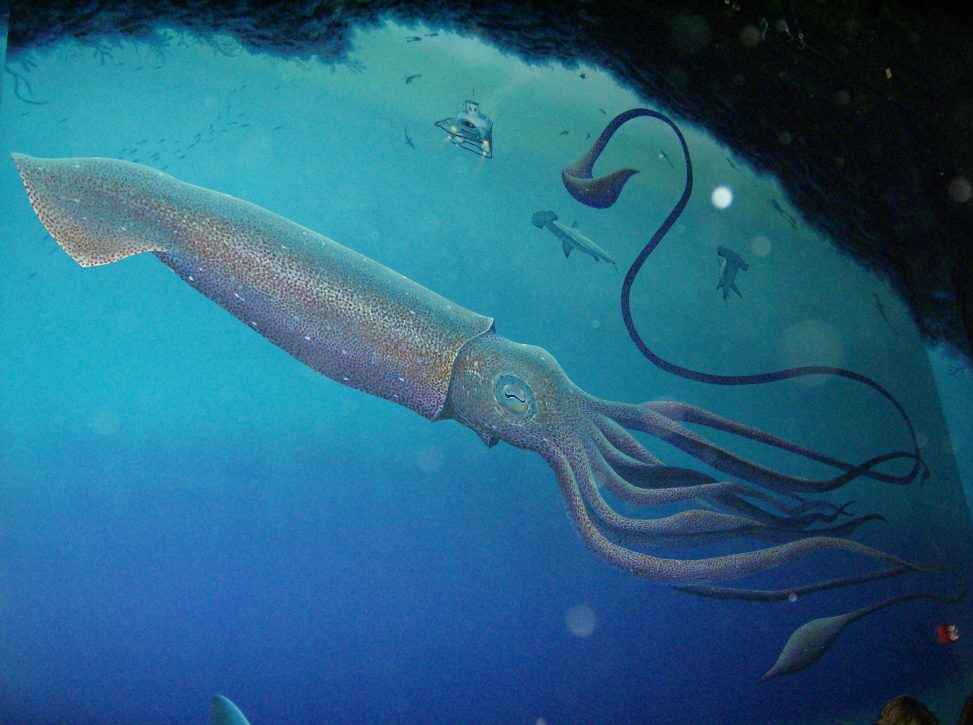The giant squid (Architeuthis dux, affectionately known as Archie) is an animal so mysterious and mighty that it has inspired the tale of the mythical kraken that has been told since the height of the sea fairing days. This signifies its gargantuan size but also its absence in our eyes. Not much is known about the animal but now, thanks to the research done by Marine Biological Laboratory and its various partner institutions, we now have a complete functioning genome for the oceanic legend.
This discovery can answer long standing questions about Architeuthis dux and other deep-sea creatures. We can finally take crucial steps to understand large size growth in animals and the conservation of the giant squid.
The genome was formed by taking 116GB of raw data and processing that into a complete 2.7GB model. To complete this, high-molecular-weight DNA was extracted from a single giant squid individual. Since it was practically impossible to get live samples of genetic information, the researchers created a library of genetic information from other cephalopod species. This was used to create DNA libraries that proved compatible to the raw data from the sample.
The DNA libraries were used to form proteins that were dissolved in squid tissue fluid and submerged in liquid nitrogen. Analyzing these proteins led to the coding of genes. These genes were then compared to genes from the four other cephalopod species to test their viability. In some cases, predictions were made using the genes from other cephalopods as a blueprint to cover up empty spaces in the genome of the giant squid. After a total of 18,054 predictions, a completed genome was formed.
The results show that the giant squid’s genome has a single copy of developmental genes that are present and used in most species to grow larger. This stands to reject the theory that whole-genome duplication, a process where there are multiple copies of all genes in a species, is what leads to the giant squid’s humungous size. What was also found was that the squid’s genes were repeats, however, they did not contain the developmental genes, further rejecting the viability of the whole-genome duplication process.

A figure showing the genetic makeup of various cepholopods including the giant squid that has 50% repeated genome From GigaScience, via academic.oup.com
In recent years, processes such as oceanic warming and acidification, pollution, heightened bodily oxygen deprivation, and fishing have been shown to affect cephalopod populations. High concentrations of Mercury and flame-retardant chemicals have been found in the giant squid’s tissues. Interestingly, cephalopods have also been found to experience massive acoustic trauma from noise pollution in the oceans. Therefore, it is crucial to have a greater biological understanding of these important, but rarely encountered animals, in order to aid conservation efforts and ensure their continued existence. The genome is an important resource for future population genomic studies aiming at characterizing the diversity of the legendary squid.
The giant squid is a rarely sighted species which has never been caught and kept alive, meaning their biology was largely a mystery. The enigmatic giant has a worldwide distribution in the deep ocean, except in the high Arctic and Antarctic waters. Which is why, having a genome assembled for this deep-sea–dwelling species will allow several pending evolutionary questions to be unlocked.
References:
Foncesca, R. da., et al. 2020. A Draft Genome Sequence of the Elusive Giant Squid, Architeuthis dux. GigaScience, 9(1).
Link: https://academic.oup.com/gigascience/article/9/1/giz152/5697198

Alex
"This title was very eye catching! That is so interesting that such a ..."
Alex
"This is really interesting! The fact that crops and plants are damaged is ..."
Alex
"Well done, this article is great and the information is very captivating! Ethics ..."
Alex
"I was intrigued throughout the whole article! This is such an interesting topic, ..."
Alex
"This is such an interesting article, and very relevant!! Great job at explaining ..."
Grandpa
"Honey You Did a good job I will forward to my eye doctor "
murphymv
"This article is fascinating because it delves into the details of the research ..."
murphymv
"I agree, adding the photo helped solidify the main finding. "
murphymv
"This is a fascinating finding. I hope this innovative approach to improving transplants ..."
Sherzilla
"This is a great article! I would really love to hear how exactly ..."
Sherzilla
"It's disappointment that these treatments were not very effective but hopefully other researchers ..."
Sherzilla
"I agree with your idea that we need to shift our focus to ..."
Sherzilla
"It's amazing to see how such an everyday household product such as ..."
Lauren Kageler
"I will be interested to see what the data looks like from the ..."
Lauren Kageler
"A very interesting article that emphasizes one of the many benefits that the ..."
maricha
"Great post! I had known about the plight of Little Browns, but I ..."
Sherzilla
"I assumed cancer patients were more at risk to the virus but I ..."
Sherzilla
"Great article! It sheds light on a topic that everyone is curious about. ..."
maricha
"This article is full of really important and relevant information! I really liked ..."
maricha
"Definitely a very newsworthy article! Nice job explaining the structure of the virus ..."
maricha
"It's interesting to think that humans aren't only species dealing with the global ..."
murphymv
"This is very interesting and well explained. I am not too familiar with ..."
Lauren Kageler
"Great article! This post is sure to be a useful resource for any ..."
Lauren Kageler
"Definitely seems like an odd pairing at first, but any step forward in ..."
murphymv
"What an interesting article! As you say, height and dementia seem unrelated at ..."
murphymv
"Great article! I learned several new methods of wildlife tracking. This seems like ..."
murphymv
"Very interesting topic! You explained cascade testing and its importance very well. I ..."
Alex
"This article is really interesting! What got me hooked right away was the ..."
Sabrina
"I found this article super interesting! It’s crazy how everyday products can cause ..."
Erin Heeschen
"I love the layout of this article; it's very eyecatching! The advancements of prosthetics ..."
murphymv
"Awesome article! I like the personality in the writing. Flash Graphene not only ..."
murphymv
"Very interesting work! I don't know a whole lot about genetics, but this ..."
Cami Meckley
"I think the idea of using virtual reality technology to better help prepare ..."
Erin Heeschen
"I wonder if there's a connection between tourist season and wildfires in the ..."
Ralph berezan
"Not bad Good work "
Michelle
"This sounds like it would be a great tool for medical students! ..."